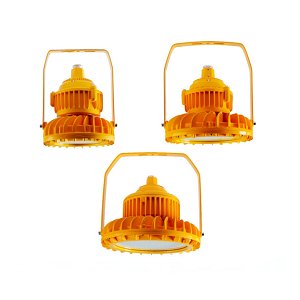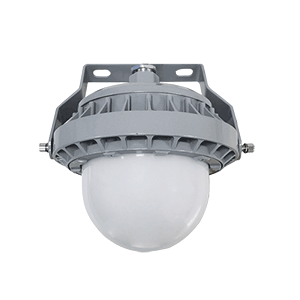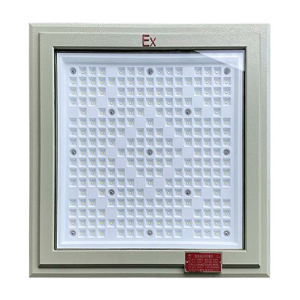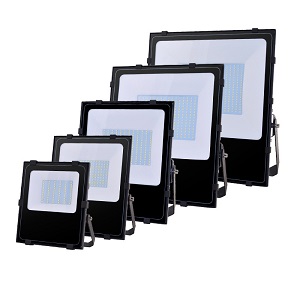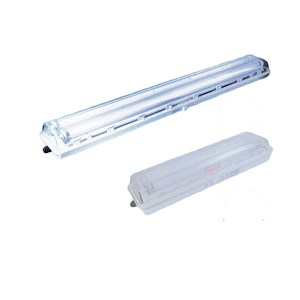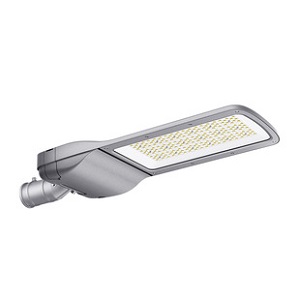Performance of LED lamps and their requirements

introductory
The use of LEDs in lighting is growing rapidly. Globally, about 1/3 to 1/2 of all commercial, industrial and outdoor lighting fixtures utilize LED modules.The potential energy savings of LEDs exceeds 50%, which, combined with the long lifespan of LED fixtures, significantly reduces operating and maintenance costs. This results in a shorter payback period for LEDs, and lighting projects are more inclined to choose this environmentally friendly lighting technology.
In recent years, the market transition to LED lighting has been much faster than research predicted. It is sometimes difficult to keep up with the development of new electronics and lighting standards, and multiple standards are constantly being updated. It is important for decision makers and users to understand LED lighting technology, performance and standards in order to select high quality LED lighting. This not only allows customers to select the right fixture for their needs faster, but also ensures that the new lighting solution selected meets relevant lighting standards and requirements.
LED lamps and lanterns performance requirements standards
In the LED lighting industry, it is important to identify the main parameters of an LED luminaire and to understand the meaning of each parameter. The general rule in the EU is that electrical equipment (including luminaires) can only be marketed and sold if it meets the essential requirements of the relevant European Directives (translated into national law). Light sources (luminaires, modules) and lighting fixtures are subject to the Low Voltage Directive, the Electromagnetic Compatibility (EMC) Directive, the Energy-Related Products (ErP) Directive and the General Product Safety Directive. Therefore, these products (including street lights, floodlights, stadium lighting and indoor lighting) must comply with EMC, EMF, eco-design and other requirements.
The International Electrotechnical Commission (IEC) has developed performance standards for LED luminaires and LED modules.The performance standards for LED products define quality criteria and specify agreed common measurement conditions. Thus, all those involved or active in the LED industry have a basis for comparing and evaluating the performance of LED luminaires. This article is based on the following standards for LED luminaires and LED modules.
IEC 62722-1:2014 Lamp performance Part 1: General requirements.
IEC 62722-2-1:2014-11 Luminaire performance Part 2-1: Special requirements for LED luminaires.
IEC 62717:2014-12+AMD:2015 Performance requirements for LED modules for general lighting.
IEC 62031:2020 LED modules for general lighting. the performance requirements for LED luminaires are directly related to the provisions of the LED module standard; therefore, this standard should also be taken into account when evaluating LED lighting systems.
IEC 62778:2014 Blue light hazard assessment for all lighting products.
IEC 13032-1:2004, IEC 13032-2 and IEC 13032-4:2015 Light and lighting: light distribution and luminous flux.
Basic Performance Requirements
Rated input power of LED luminaires (in watts)
If the luminaire utilizes replaceable LED modules/bulbs, the rated input power and the number of LED modules shall be declared. For luminaires utilizing LED modules, the rated input power shall be declared in the luminaire specifications.
Under the conditions of rated voltage, rated ambient temperature Ta and 100% luminous flux (light output) after thermal stabilization, the measured input power (W) of the LED luminaire shall not exceed 10% of the declared rated input power. When the rated input power <10W, it should be accurate to one decimal place. When the rated input power ≥ 10W, should be declared as a whole number.
For luminaires utilizing constant luminous flux technology, the LED lighting rated input power factor shall be declared at the beginning and end of the luminaire life LxBy, or based on the average luminaire life Lx.
Rated luminous flux of LED luminaires (in lumens)
In the case of LED luminaires, the rated luminous flux (lumens) must be declared in the product documentation. This usually refers to the initial luminous flux of a new luminaire under specific operating conditions. The luminous flux rating of a luminaire can be determined by an appropriate calculation method. The measured initial luminous flux value of a luminaire shall not be less than 10% of the published rated luminous flux. The declared overall luminous flux values for LED luminaires are based on an ambient temperature of 25°C unless otherwise stated. For more information on the setting of luminous flux values (so-called absolute determination of luminosity), please refer to the standard EN 13032-4.

Power and Luminous Flux
Luminous efficacy of LED luminaires (unit: lm/W)
The luminous efficacy of LED luminaires refers to the ratio of luminous flux emitted by the luminaire to the power consumed (unit: lumen/watt), measured in lumens per watt (lm/W) (lumen calculation method). It is a measure of the efficiency of a light source in producing visible light. In general, the higher the luminous efficacy, the more the luminaire can illuminate the target area at a lower power. However, to evaluate the performance of a luminaire, it is often not sufficient to consider luminous efficacy alone, as the lumen output of a luminaire also includes stray light, which does not contribute to the illumination of the target area. For example, for narrow-beam floodlights and streetlights, it is important to consider not only luminous efficacy but also light intensity distribution; see below for details.
Light intensity distribution of LED luminaires
The light intensity distribution is determined using a Goniophotometer and recorded in the lighting design document (IES or LDT document). The spatial distribution of light intensity from a light source or luminaire is represented by a light intensity distribution curve. The figure below shows the light intensity distribution of an indoor luminaire on the left and a street light on the right. The cross section on the vertical axis is represented by the light intensity distribution curves (IDC) in the C-plane with the associated beam angle γ. These curves must be represented in polar coordinates to comply with EN 13032-2. The light intensity values are expressed in candelas (cd) or candelas per thousand lumens (cd/klm).

Light distribution or light intensity distribution
Luminous flux maintenance ratio
Luminous flux maintenance describes the decay of luminous flux over time due to aging of the luminaire during normal operation (this excludes the effects of external factors such as dirt, optics and lightweight glass). It is defined as the ratio of the decayed luminous flux to the initial luminous flux. For outdoor lighting, luminous flux maintenance ratio will be measured at the luminaire level. The luminous flux maintenance ratio will be determined based on the rated lifetime of the luminaire and will be provided by the manufacturer in accordance with IEC 62722-2-1:2014. For example, the median lifetime Lx is equal to the duration of the project. An average lifetime L90 = 100,000 hours means that the remaining luminous flux after 100,000 hours is 90% of the initial luminous flux, resulting in a luminous flux maintenance ratio = 0.90.
color coordinates
The chromaticity coordinate is an objective measure of the quality of a color, independent of luminance. Chromaticity consists of two separate parameters, often referred to as hue (h) and chroma (s), where the latter is also known as saturation, chroma, intensity, or excitation purity. The quantities of these parameters follow most people’s trichromatic vision, which is assumed by most color science models.
A chromatic chart is a graph showing all possible colors. Each color is defined by a pair of numerical coordinates: the chromatic coordinates. We can use a chromatic chart to see how different light colors mix. The points on the edges of the curves in the graph are pure spectral colors: the colors of the rainbow. The line between any two points in the diagram shows all the colors that can be produced by mixing these two colors. Thus, any color in the diagram can be obtained by mixing it in different ways. Only the colors at the edges of the diagram are unique colors. If we extend this idea to the mixing of three colors, we get a triangle. This triangle is called the color gamut. The color gamut shows all the colors that can be obtained by mixing the colors at the three corners. The edges of the color gamut are the colors that can be obtained by mixing the two endpoint colors.

Elipses de MacAdam
color rendering property
Color rendering is expressed through the color rendering index (Ra). Although light sources may emit the same color of light, there may be differences in the color rendering of the light source due to differences in the spectral composition of the light beam. Therefore, the general color rendering index Ra was introduced, which provides a scale for objectively identifying the color rendering characteristics of a light source. It indicates the degree of match between the perceived color of an object under a particular light source and its appearance under a reference light source. According to EN 12464-1, light sources with a color rendering index below 80 should not be used in workplaces where people spend long periods of time. A color rendering index Ra value above 90 is generally considered to be very good, while a Ra value between 80 and 90 is described as good.

color performance
color tolerance
Color tolerance can be precisely defined using the x and y coordinates in the CIE color chart. in 1942, the scientist McAdam (McAdam) conducted experiments on 25 colors using correlated color temperatures, measured about 5 to 9 opposites of each color point, and recorded the two points that could be distinguished from each other when there was a color difference. The result was a series of theories of varying sizes and lengths known as McAdam ellipses: the McAdam ellipse theory. A McAdam ellipse is an area of the CIE color chart that contains a color that the human eye cannot distinguish from the color at the center of the ellipse. The outline of the ellipse represents the distinguishable color. McAdam ellipses are usually enlarged, for example, to three, five, or seven times their original diameter. These three-, five-, or seven-step McAdam ellipses are used to distinguish between two light sources, where “step” represents the range of color differences. A light source with a three-step McAdam ellipse exhibits less variation than a light source with a five-step McAdam ellipse. Special care should be taken to ensure that the color difference is small, especially in lighting applications where the light sources are not far apart and may be seen at the same time.
Specified ambient temperature of the luminaire
The performance of a luminaire can be affected by the ambient temperature. The nominal ambient temperature Ta is the maximum temperature at which the luminaire can be operated continuously under normal operating conditions (it may briefly exceed 10K during operation). When Ta = 25°C, no special declaration of the luminaire is required; other nominal ambient temperature values need to be declared. In order to demonstrate that the luminaire is capable of normal operation at elevated temperatures for extended periods of time, the 62722-2-1 standard introduces the parameter Tq. The Tq (quality) temperature indicates the maximum nominal ambient temperature allowed at a specified level of performance (including life expectancy, lighting characteristics). For example, a ZGSM luminaire can operate normally at 50°C for extended periods of time, therefore its nominal Tq = 50°C.
Lifetime standards for LED lamps and lanterns
The life of an LED luminaire is not defined by just a sudden point of failure. In fact, most luminaires do not fail completely within a certain operating time, but their brightness decreases over time (i.e., the light output decays), which is referred to as a gradual decay of light output. Thus, the lifetime of an LED luminaire is essentially limited by a decrease in luminous flux below a predefined minimum level of “x[%]” and by sudden failure. Failure of the LED control device is not considered here. In addition to the decay of the LEDs, the reduction or decay of the luminous flux may also be caused by the failure of individual LEDs or LED modules. The lifetime criteria for luminaires are described in detail in the IEC 62717 and IEC 62722 standards.
summarize
Through this article, we hope that you have some understanding of the performance requirements of LED luminaires. These performance requirements include power, luminous flux, luminous efficacy, light distribution, color temperature, color rendering index, color tolerance, lifetime (luminous flux maintenance rate) and others (light maintenance factor and sudden failure). These parameters are the key points to focus on in a lighting project, and they relate to whether the project meets the requirements, including energy efficiency, illuminance, and routine maintenance. This article is only a brief introduction, for a more in-depth understanding, please refer to the relevant content online.

